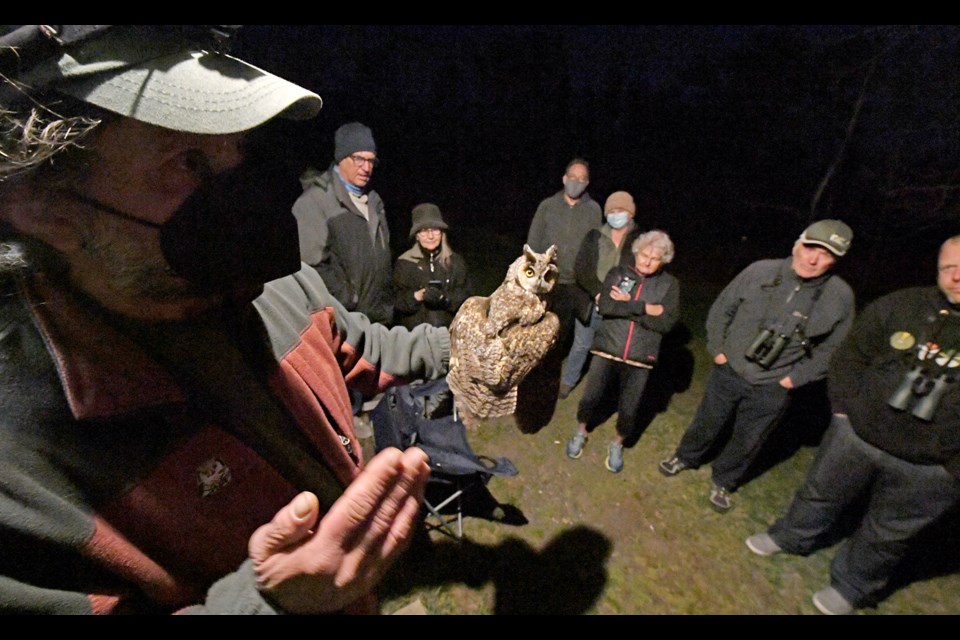One is never isolated on Whitefish Point. How could there be isolation when hundreds of thousands of birds migrate through each springtime on hormone-juiced hops across Lake Superior?
The point doesn’t even sound lonely.
Imagine a surround-sound from lake surf shrugging off another winter, coupled with a chorus of peeper frogs that resonate into the purest musical Key of C.
What makes the place seem least lonely are the people attracted to Whitefish Point in May.
Rockhounds poke and prod for agates and - as is the latest trend - look for stones that fluoresce at night under UV flashlights. Hikers get a jump on summer crowds, walking for miles along the beach and throughout trails that ring the area. The Great Lakes Shipwreck Museum doesn’t open until Memorial Day weekend, but a stray shipwreck enthusiast enjoys walking around the restored lifesaving station grounds.
And then there are serious birders, who are to mundane birdwatching what bass anglers are to just plain fishing. Severe enthusiasts pack all the gear, sparing no expense on optics, cameras, foul-weather gear, footwear, and means of conveyance to go wherever the birds are.
It’s all about birds. Warblers that fly up from as far away as Brazil. Seabirds that unexpectedly get blown in from Europe or Asia. Serious birders live for what’s called a Life List, a compilation of every bird they’ve ever seen, when they saw it and where. Many are photographing their way through a life list as well.
On May 13, a Soo Leader correspondent joined a dozen diehard Avarians - two from as far away as Leeds, England – to check in on nighttime owl banding at Whitefish Point.
Owl migration typically runs between mid-April and early May. Friday and Saturday evenings, dusk to midnight, are set aside for impromptu public sessions with Audubon-supported naturalists Chris Neri and Nova Mackentley.
Neri and Mackentley retrieve night birds from fine-meshed nets deployed around the point, returning what they catch to the Whitefish Point Bird Observatory to document information like health and prior banding. They let people see the birds up close before releasing them unharmed.
This evening’s catch was a Long-eared Owl and an Eastern Whip-poor-will.
Mackentley showed off the Whip-poor-will first.
“It’s always amazing to have the chance to see the fine detail of their cryptic plumage up close,” she said in a brief talk before release. “Long bristles extend out from around its beak to help sense and catch flying insects as it hunts them.”
Whip-poor-wills have comically oversized mouths to scoop up as many airborne nighttime bugs as possible.
Neri shared the owl.
“The spring migration here is the largest Long-eared Owl migration in North America,” he said. “Last year we banded 465. One owl we banded ended up as far south as central Texas.”
Neri and Mackentley experienced productive owl migration this past week, according to a blog they maintain.
“We banded 110 owls, including 58 Northern Saw-whet Owls, which puts the count up to 300 saw-whets banded for the season,” they posted in the blog. “We banded 46 more Long-eared Owls, which has us at 194 Long-Eared owls for the season. Unfortunately, no Boreal Owls were banded this past week. It is not uncommon to catch a straggler in late May, but it appears their migration this spring has effectively ended for the season.”
Indeed, most bird migration – day and night – wraps up by Memorial Day. Fall movement of birds happens at a more leisurely pace largely dictated by the changing weather and abundance of food.
Come summer, Whitefish Point will be a lot less isolated than it is now. The bird observatory’s bookstore opens. The point’s ideal dune and wetland habitat will yield to birders all manner of views and photos, whether birds alight in trees, soar afternoon thermals, scoot along the shore, or perch on banks of feeders maintained by observatory volunteers.



